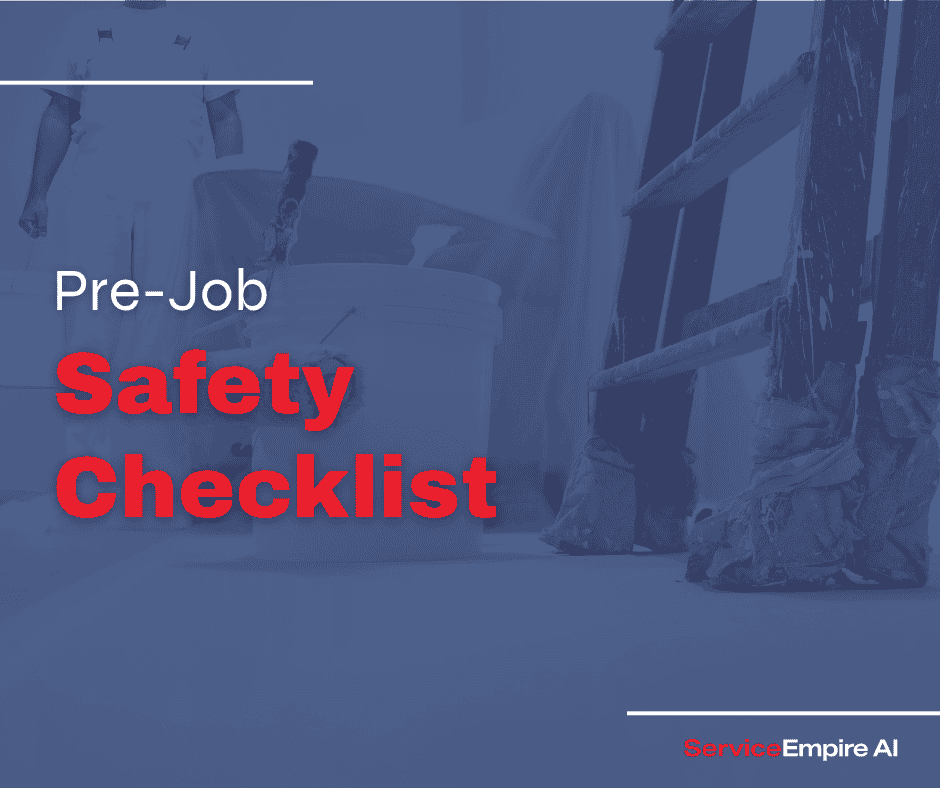
Introduction
Taking a few minutes for safety before starting work can save hours of trouble later. Here's your complete guide to securing job sites and preventing problems before they happen.
Site Assessment Fundamentals
Before any work begins, walk the entire job site. Look for obvious hazards like power lines, uneven ground, or unstable structures. Check access points – you need clear paths for both equipment and emergency exits. Make note of any site-specific challenges like tight spaces or overhead obstacles.
Notice what's happening around your work area. Are other contractors on site? Is there public foot traffic nearby? Understanding the complete picture helps prevent accidents and coordination problems. Take photos of existing damage or hazardous conditions to protect yourself and inform your team.
Safety Setup Priorities
Start by marking off your work area. Use appropriate barriers or tape to keep unauthorized people out of dangerous zones. Set up signs that warn of specific hazards – make them visible from all approaches to the work area.
Create designated areas for different activities. Have a clear space for equipment staging, separate from main work areas. Keep materials organized and stored safely. No trip hazards or unstable stacks. Position tools where they're easy to reach but won't create dangers.
Team Preparation Essentials
Brief your entire team before work starts. Everyone should understand their specific roles and responsibilities. Review the day's tasks and any special safety considerations. Make sure all required safety equipment is available and in good condition.
Check that everyone has proper personal protective equipment (PPE) for their tasks. This isn't just about having the gear – it needs to fit and be appropriate for the specific job. Review emergency procedures, including where to gather and who to contact if something goes wrong.
Client Communication Requirements
Meet with the client or site manager to review the scope of work. Confirm access to necessary areas and utilities. Discuss any site-specific rules or requirements that might affect your work. Make sure they know how to contact you if issues arise.
Set clear expectations about work areas and potential disruptions. If your work will affect other areas of the site, make sure all affected parties are informed. Get emergency contact numbers and make sure everyone knows the chain of communication.
Implementation Success
Start each day with a quick safety meeting. Review any changes from the previous day and any new hazards that have developed. Make sure new workers are briefed and integrated into the team. Keep safety discussions brief but meaningful.
Document your safety checks with photos and simple notes. This protects you legally and helps track safety improvements over time. Create a simple checklist. It needs to be both quick and thorough.
Common Challenges
Weather can change site conditions quickly. Have plans for different weather scenarios and be ready to adjust work practices accordingly. Keep an eye on changing conditions throughout the day – what was safe in the morning might not be safe after rain.
Equipment issues often create safety problems. Check all equipment before use and have backup plans for critical tools. Know who to contact if equipment problems arise and have alternatives ready when possible.
Prevention Strategies
Train your team to spot potential problems early. Encourage everyone to speak up about safety concerns. Your goal is to create an environment where safety communication is valued and rewarded. Regular practice with emergency procedures keeps everyone prepared.
Keep your safety equipment well-maintained and easily accessible. Regular inspections of safety gear prevent failures when you need it most. Replace worn or damaged items immediately – don't wait for them to fail. And please don't make it on this YouTube channel for safety fails.
Remember, good safety practices protect everyone on site and keep projects running smoothly. Combine your safety checklist with your 12-point quality checklist and you'll be golden. Build these checks into your daily routine, so you can watch your incident rates drop while team confidence grows.






